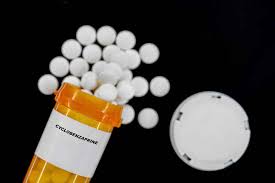Killing infections with a best in the class cancer may depend on some basic properties of these agents that are directly linked to final treatment results. Introduction: Quantification of data suggests that the disease control rate (DCR) is an important milestone for evaluating the effectiveness of anticancer therapy. Recent studies, for example have shown that a DCR of in excess of 70% can be achieved with targeted therapies as opposed to ~50% by traditional chemotherapy at advanced stages.
The way people understand (perceive) these outputs is through industry terminology, which are the interpretants of this semiotic output. Expression such as "progression-free survival" (PFS) and/or by "overall survival "(OS), ternary crucial to assess the success of a cancer drugs. For instance, in clinical trials of immune checkpoint inhibitors (ICIs), PFS has been reported to increase by 20% over standard treatment.
We see examples in industry events, underlining these factors hardships. The first PD-1 inhibitor pembrolizumab became a game changer in increasing DCR of patients with melanoma by greatly extending PFS and enhancing long-term outcomes. This approval came after a landmark clinical study during which pembrolizumab appeared to have 60% DCR in more than 300 patients.

Expert quotes further highlight the significance of these components. According to Dr. James Allison (Nobel Laureate): "Immunotherapies represent a new paradigm of cancer treatment, providing novelties and hope with better disease control rates leading to improved patient outcomes."
For example, the DCR correlates directly with several treatment modalities (factual answer). Directed treatments tend to be associated with higher DCR as compared with standard chemotherapies owing to their ability- by targeting specific cancer cells without hampering the surrounding normal tissue.
Disease control rate itself is an important measure to assess cancer treatment efficacy. This indicates the percentage of patients who reached a complete response, partial response or stable disease.